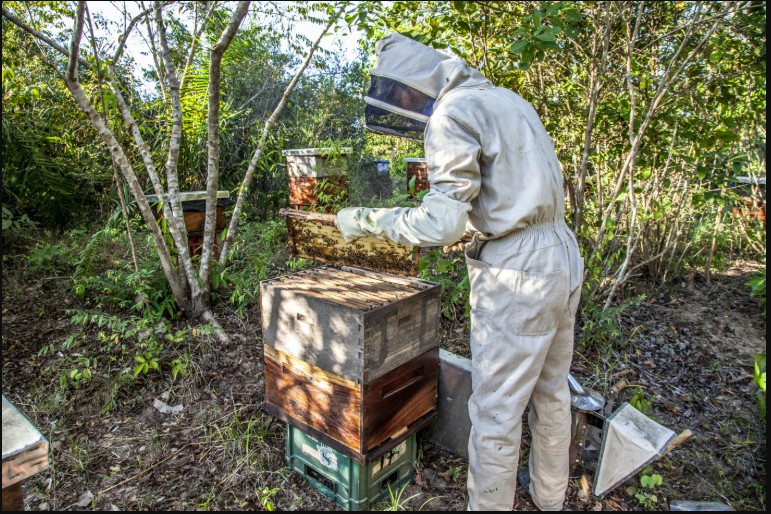Bees are vital to the environment, playing an essential role in pollination and supporting ecosystems across Melbourne. However, when their activity peaks and nests start appearing around homes and public spaces, their presence can quickly shift from helpful to hazardous. For homeowners, understanding bee season in Melbourne is the first step toward preventing infestations and preparing for safe and timely interventions when needed.
Whether it’s native stingless bees or swarms of European honey bees setting up hives under eaves or in wall cavities, being proactive can save you time, money, and unnecessary stress. For professional assistance, Bees Removal Melbourne offers safe and efficient bee removal services to protect your home and family.
Understanding Melbourne’s Bee Season
Bee activity in Melbourne is closely tied to seasonal changes. While bees remain relatively quiet during colder months, they become highly active as the weather warms. Here’s a breakdown of typical bee behaviour throughout the year:
Spring (September – November): Peak Swarming Season
Spring marks the official start of bee season. As temperatures rise and flowers begin to bloom, bees begin searching for new nesting locations. This is the time when hives often split, with a new queen taking a portion of the colony to a new site.
Swarms may be seen clustering on tree branches, fences, or house eaves temporary spots as they scout for a more permanent location. While swarming bees are not typically aggressive, they can still pose a threat, especially to children or those allergic to stings.
Summer (December – February): Full Nesting Phase
By summer, bees that swarmed in spring have likely established new hives. Activity around nests is at its highest, with bees foraging for nectar and protecting their colonies. Homeowners may notice consistent bee traffic near entry points, increased buzzing, or even the smell of honey.
This is the period when nests, especially in wall cavities or roofs, can grow quickly and create structural concerns or even honey seepage. Prompt beehive removal in Melbourne during this time is crucial to prevent long-term damage.
Autumn (March – May): Decline in Activity
As temperatures cool, bees reduce foraging and begin preparing their hives for the colder months. You may notice less external bee traffic, but don’t be fooled hives are still active internally.
Late autumn is an ideal time for inspection and treatment. Removing smaller, less active hives during this transitional period is often easier and less invasive.
Winter (June – August): Hidden Hives Remain
While most people assume winter is bee-free, this is the time when hidden hives often go unnoticed. Bees stay inside to conserve warmth, making them harder to spot but still very much present. Some homeowners only realise they’ve been living with bees when they hear buzzing in walls or notice honey residue.
Winter presents a good opportunity for bee pest control in Melbourne, as the lower bee activity allows for safer and more thorough removal without aggressive behaviour.
Signs You May Have a Bee Infestation
Early detection can make all the difference in managing a bee problem. Look for these common signs around your home:
- Increased bee activity around one spot (e.g., a vent, eave, or wall crack).
- Buzzing sounds inside walls or ceilings.
- Sticky residue or dark patches from honey seeping into plaster or timber.
- Sightings of dead bees near windows or inside the house.
- Clusters or swarms of bees appearing suddenly on your property.
If any of these signs appear, seeking professional advice before attempting DIY measures is highly recommended.
How to Prepare Your Home for Bee Season
You don’t have to wait until bees move in to take action. Here are several preventative steps homeowners can take:
1. Inspect and Seal Potential Entry Points
Examine your roofline, vents, gaps in cladding, and wall cavities. Bees often build nests in small, sheltered spaces. Use caulking or mesh to seal any gaps or holes.
2. Trim Back Overhanging Branches
Tree branches near your roof or windows provide easy access points for swarming bees. Keeping them trimmed helps deter nesting.
3. Remove Attractants
Bees are drawn to sweet smells and water sources. Cover compost bins tightly, clean up food waste, and fix any outdoor leaks or standing water.
4. Monitor Regularly
During spring and summer, walk around your home weekly to check for any unusual bee activity. Early detection makes removal easier and safer.
Why Professional Help Matters
While DIY remedies for bee issues may seem appealing, they often fail to remove the entire hive or address the root problem. Without proper tools and knowledge, you could disturb the colony and trigger defensive behaviour, increasing the risk of stings and structural damage.
Professionals like bees removal bring experience, training, and safe equipment to handle the problem effectively. Whether it’s a swarm on a tree or a fully developed hive in your roof, expert removal ensures bees are relocated when possible and the nesting site is safely cleaned and sealed.
What Affects Bee Removal Cost in Melbourne?
When considering the bee removal cost in Melbourne, several factors influence the pricing:
- Location of the hive: Roof cavities or high walls often require specialised equipment.
- Size and maturity of the colony.
- Accessibility of the area.
- Need for repairs after removal (e.g., damaged plaster or timber).
- Environmental handling such as relocating native species rather than extermination.
Most reputable providers offer upfront pricing after a site inspection. This helps ensure transparency and avoids unexpected expenses.
If you’re noticing increased bee activity around your home or suspect a hive might be forming, don’t wait for the issue to escalate. Bees Removal Melbourne offers safe, eco-friendly bee removal services designed to protect both your property and the environment. Whether it’s a hive in your roof or a swarm in your backyard, the team is ready to help with expert advice and proven solutions. Call 03 9021 3752 today for a no-obligation quote and let the professionals take care of your bee problem with care and confidence.




